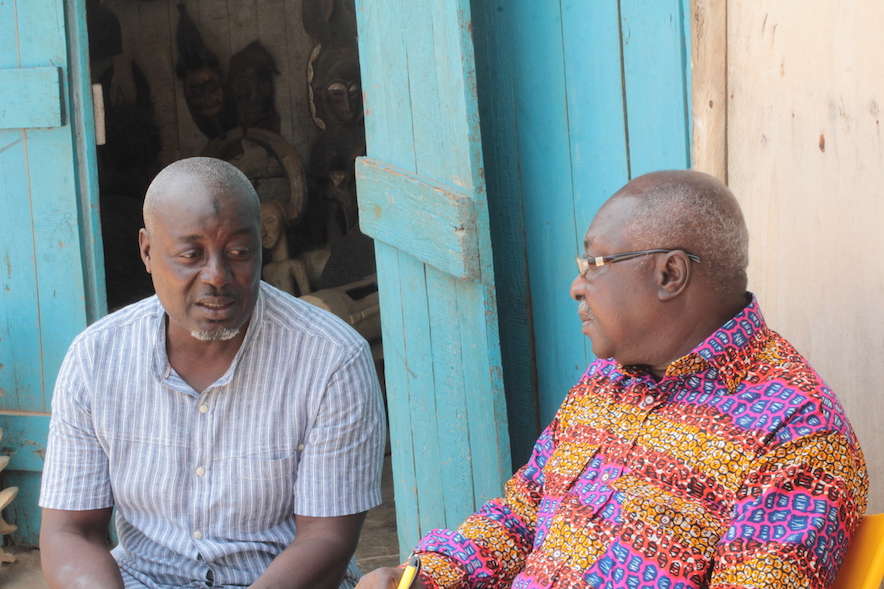
For this Ghanaian artisan, woodcarving may have emerged from life’s pain. But in the process, it transformed his own life, and the lives of all those in his workshop.
“My fate as a craftsman appeared to have been sealed with the demise of my father,” says Salihu Ibrahim, recounting the story of his career. “I was a child then. I remember being dispatched to go and live with the closest friend of my father’s. Opanin Osei happened to be a renowned wood carver at that time, considered the chief carver for the Akwamu King. By age ten, I was already helping with the finishings to his products, mainly by taking up the chore of polishing.”
Did you learn to carve? I asked.
“Yes under the tutelage and guidance of the good gentleman, I learned all the skills. I lived and worked with him for fifteen years before I came to the city in search of greener pastures. I was indeed a very skilled craftsman when I arrived in Accra,” he paused.
“What were your expectations when you arrived in Accra?”
Salihu smiled, obviously reliving those days as a newcomer in the city. He continued his story. “I arrived here with fifty pieces of wood carvings. My ambition was to make a good sale, build a workshop and start a real business. I was young and full of dreams.” He paused again, this time actually laughing about something he appeared to have remembered.
“Did things work out the way you planned it?” I quizzed.
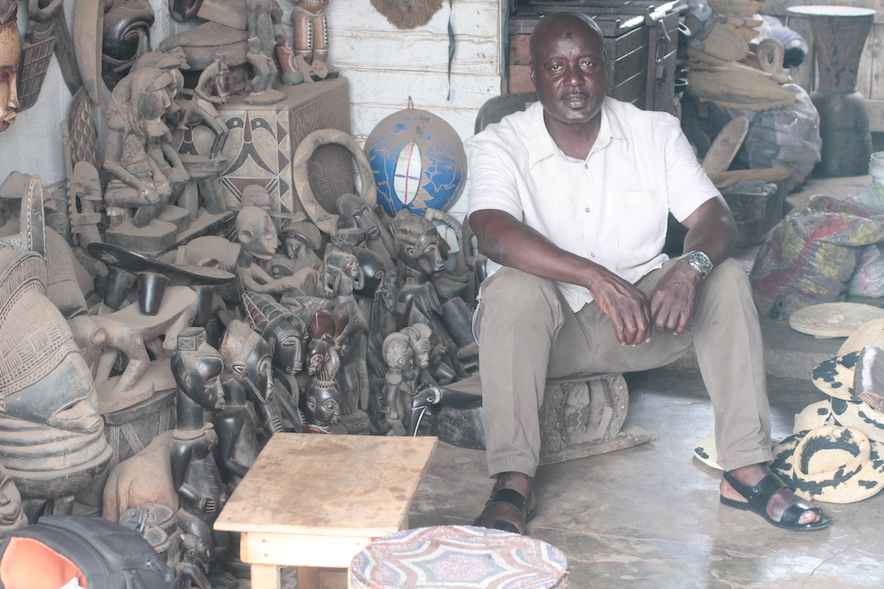
He replied promptly. “That’s why I was laughing. I soon learned that apart from my carving skills, I knew next to nothing about the business. I went through the school of hard knocks to learn the business side of the trade. In fact, my first fifty pieces fetched me almost nothing.”
I was curious I sat up and looked at him. “Oh, I was a novice and people took advantage of my ignorance. I gave out a number of the pieces away on credit. Most of the buyers never showed up again.”
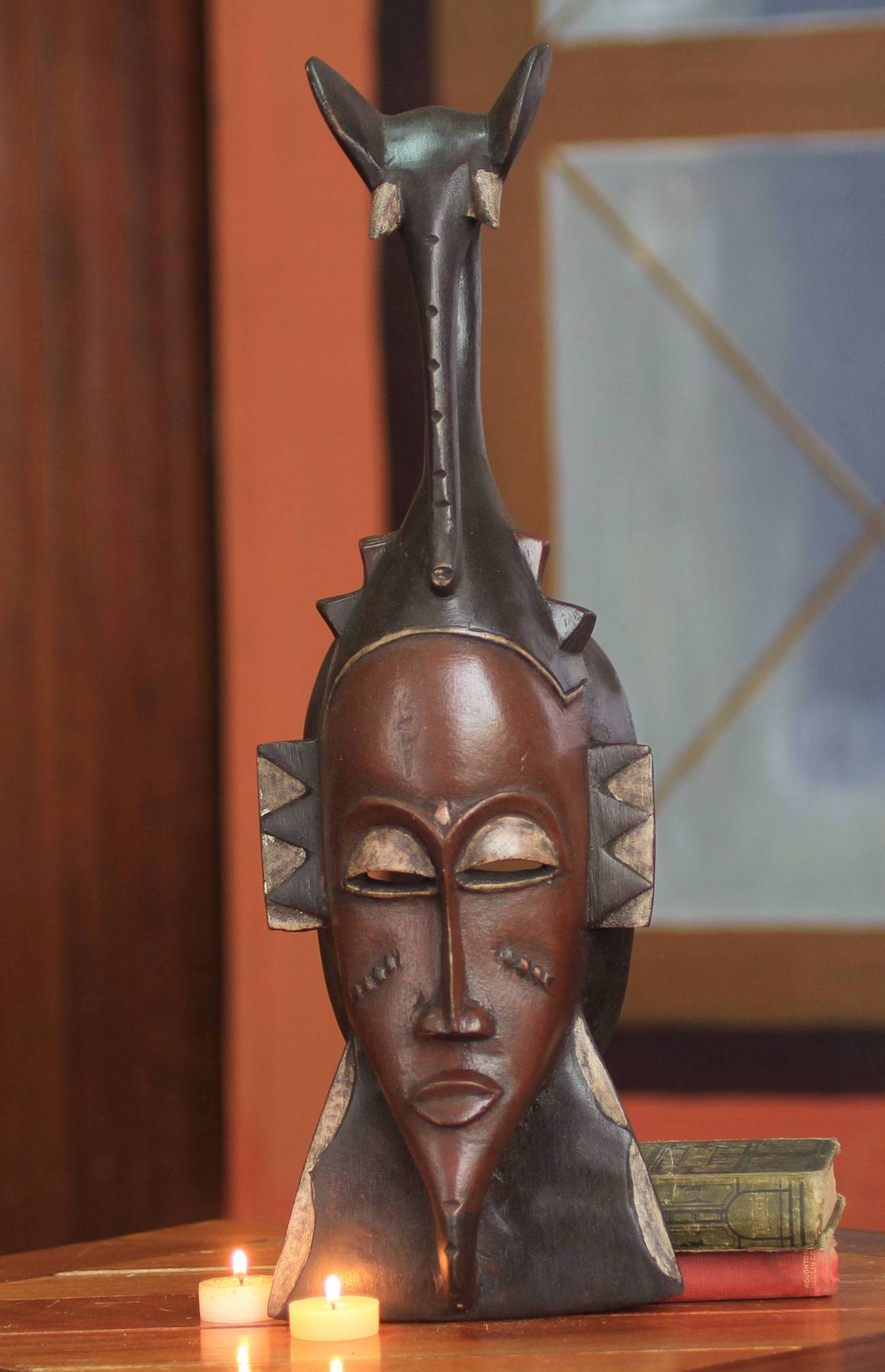
Click Image For More Details
Salihu says he learned the intricacies of the trade very fast. “So when did you get into real business?” I asked, picking on his own words.
“It took quite some time. In the early days, some elderly kinsmen of mine used to display their wares on the pavement on this very street about a kilometer to the west. I joined them. The Arts Centre then was a small compound and only a few people operated there. I worked my way there, gradually moving up in society! It’s been over twenty years now and I have come a long way, I have exhibited my works at local art fairs as well as in the entire sub-region. I am known in Mali, Burkina Faso, Togo, Nigeria and Ivory Coast.”
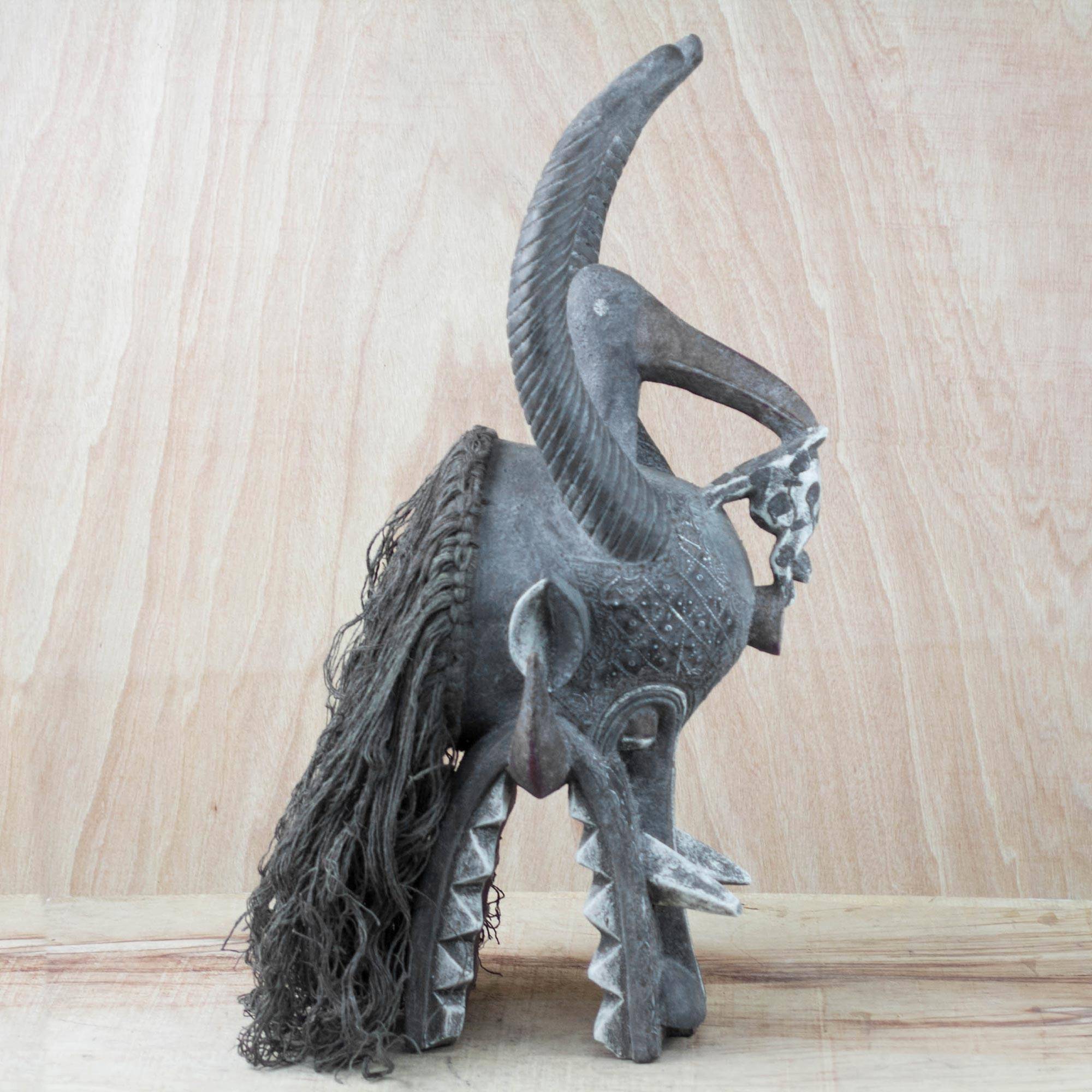
Click Image For More Details
Salihu told me that he has helped train a number of carvers, some of whom are registered with NOVICA.
“For the past decade, I have maintained ten apprentice carvers at a time.“ He told me. “The apprentices learn the art of carving and remolding carved items into antiqued pieces.”
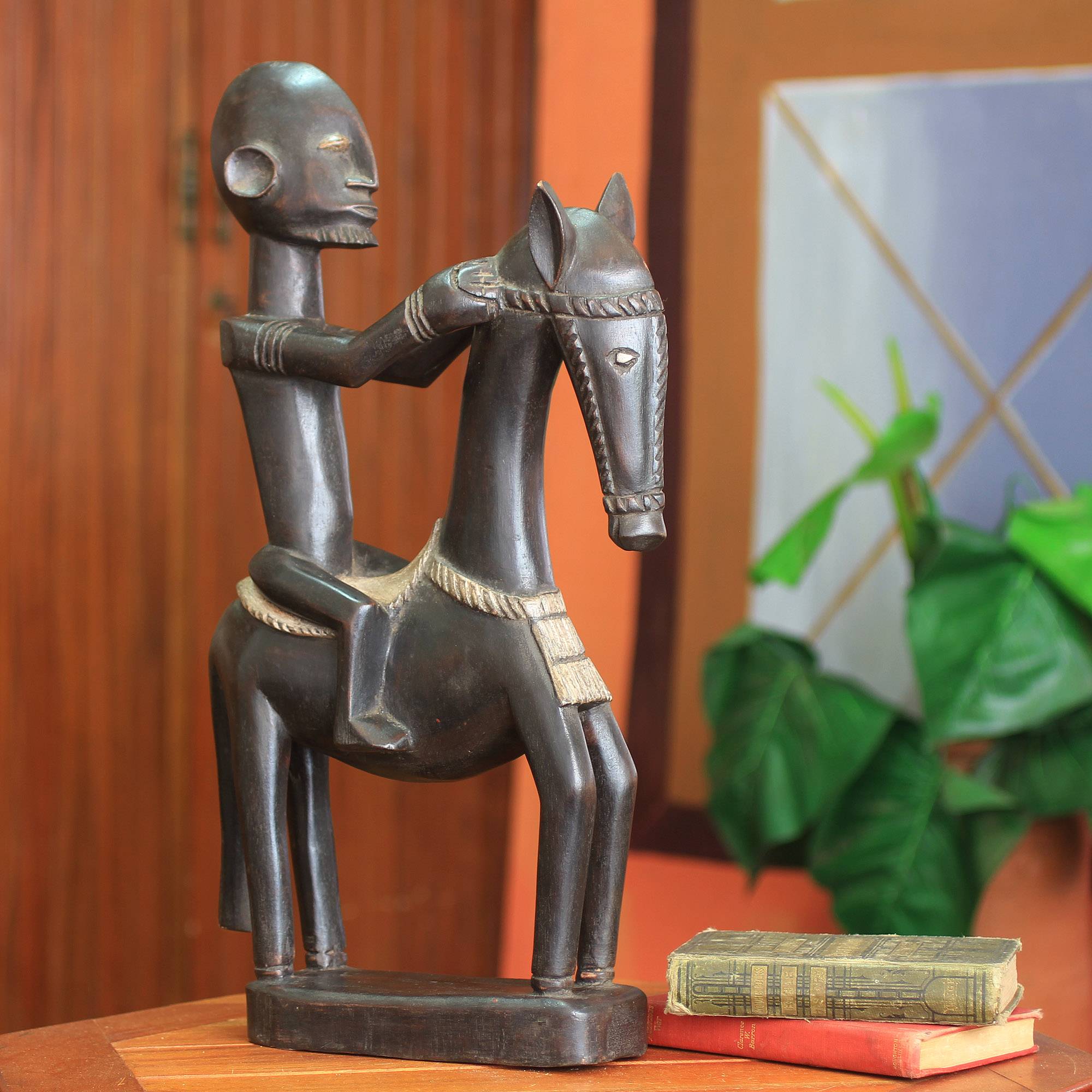
Click Image For More Details
“Did you mention a breakthrough?” I took him back to that assertion.
“It’s rather an interesting story. When NOVICA made the first contact with us at the Arts Centre, we were only interested in selling our pieces to customers in person. They bought pieces outright and also placed orders. Then they began the crusade with internet marketing. We were very skeptical. We took the whole initiative with a pinch of salt. We thought we were being conned! Today, I am grateful that they were able to win me over early.”
“And the breakthrough,” I prompted.
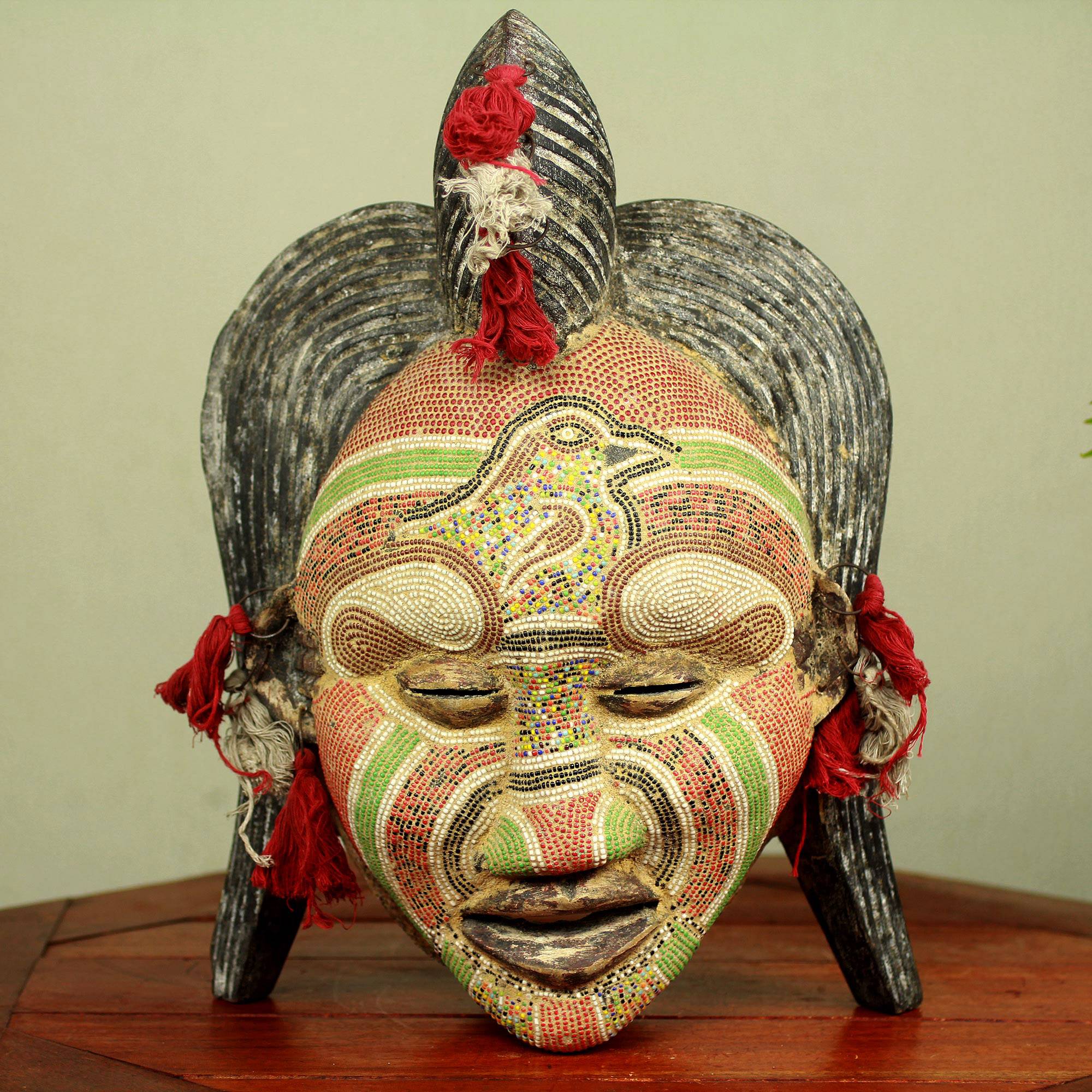
Click Image For More Details
“Oh, it’s NOVICA, he said. “I have been registered for over fifteen years; they have been my biggest customer. I consider myself as an ambassador, spreading the good news of NOVICA.”
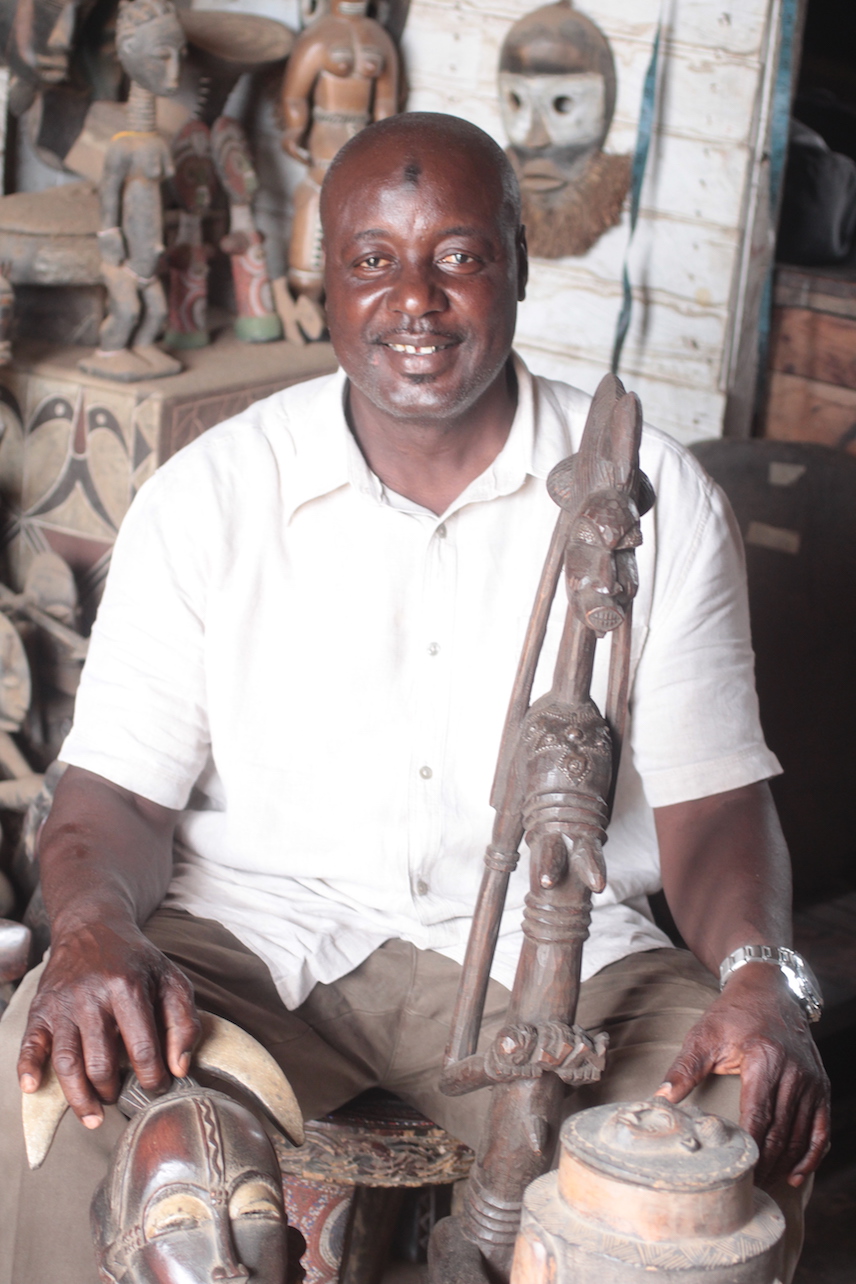
Please explore Salihu’s entire collection here.




